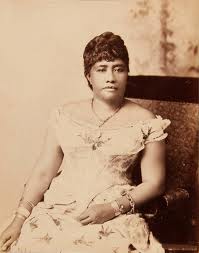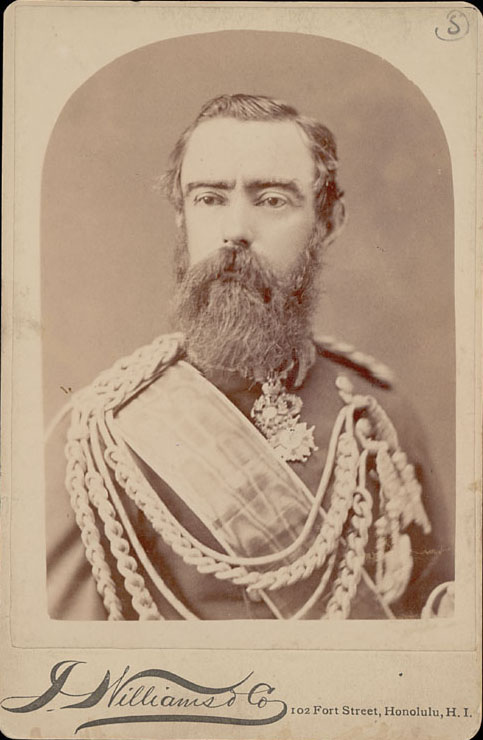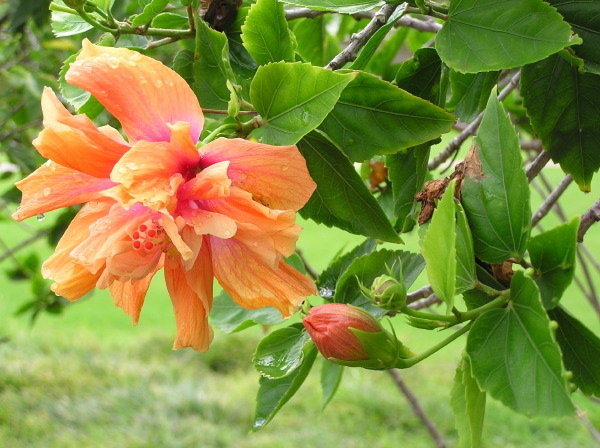 I’ve been to Hawaii a few times, and growing up it always seemed like the happiest place on earth---South Pacific edition---but one chance overheard statement in 2003 stays with me and can probably be credited with changing (or at least complicating) my view of the islands forever. (I also wrote about it here, where I reviewed Sarah Vowell’s excellent Unfamiliar Fishes for my book blog. Just openly acknowledging that I’m repeating myself on the internets.)
I’ve been to Hawaii a few times, and growing up it always seemed like the happiest place on earth---South Pacific edition---but one chance overheard statement in 2003 stays with me and can probably be credited with changing (or at least complicating) my view of the islands forever. (I also wrote about it here, where I reviewed Sarah Vowell’s excellent Unfamiliar Fishes for my book blog. Just openly acknowledging that I’m repeating myself on the internets.)
So what was the statement? My parents and I were poking around a tiny inlet on the Big Island one evening, and nearby a Hawaiian family was having a BBQ picnic. One of the men laughingly reprimanded a few tykes who were getting too rambunctious with this: “You want to be like the white man? Killing everything you see?”
That was my first indication that Hawaii was, shall we say, acquired by the United States by means less than savory (though really, we could say that about all the states . . . but I digress!). The man wasn’t speaking with resentment, but this acquisition, it would seem, dramatically affected the worldview of his fathers and grandfathers and continued to color his own. (No pun intended.)
As far as anti-imperial icons goes, Liliuokalani is pretty tops. She’s not the only figure in the islands’ anti-imperial movement, but she fought back in the last days of Hawaiian sovereignty against an encroaching American authority, sought to prevent annexation, and was even placed under house arrest for her alleged role in inspiring a coup (echoes of Eleanor of Aquitaine!).
The first and last queen of Hawaii was born Lydia Kamakaeha to a noble family, into a culture already experiencing the drastic effects of white missionary activity and Western economic and strategic interest. She was educated by missionaries at the prestigious school for high-ranking Hawaiian children and married a white sea captain’s son named John Dominis. He’s the bearded stud seen here:
The line of Kamehameha the Great was broken after the death of Kamehameha V in 1872, and two years later Lydia’s brother, David Kalakaua, became king. Lydia was now a member of the royal contingent and heir to the Hawaiian throne. In 1887, she accompanied her brother and his wife on a great journey to Queen Victoria’s Golden jubilee (the 50th anniversary of Vic’s reign; long enough for anyone, but she’d go ahead and add another 14 years of rule to that anyway).
This probably doesn’t need to be said, but going on a trip in 1898 was no joke. Fifty years later, you could hop on Pan-Am and be in London in less than a day. Liliuokalani and her family spent months on the road. They took a boat to San Francisco, took a train across the United States, and then took another boat to England. Along the way, they visited all the classic road trip pit stops: Sacramento, Salt Lake, Denver (which she describes as “an infant city… [with] but a few scattered houses”), the oil fields of Pennsylvania, Boston, New York, and, of course, Washington, D.C. They were received by President Grover Cleveland and dined at the White House, as they were later received by Queen Victoria in London.
Personally, I find the Hawaiian royal family’s trip fascinating. I honestly think it should be immortalized in a movie. It would be part biopic, part historical drama, part road trip buddy comedy (I’m thinking John Dominis could be the whiny guy who keeps screwing things up for everyone else; Liliuokalani describes how, in San Francisco, he had to be taken into the wharf on a stretcher because of a sudden attack of rheumatism).
On David Kalakaua’s death in 1891, Lydia took the throne as Liliuokalani. She was, notably, to be the first reigning queen of Hawaii, as well as the last Hawaiian monarch. For decades, white missionary descendants and businessmen had been playing an increasingly active role in local government. When Liliuokalani, in an effort to restore more authority to the Hawaiian monarch, abrogated an 1887 treaty that gave special privileges to the United States (including ceding them Pearl Harbor), the businessmen had had enough.
The Missionary Party deposed Liliuokalani in 1893 in a bloodless coup and announced their rule as provisional government. Sanford Dole (cousin of the pineapple guy) became president and pushed for Hawaii to be annexed by the United States. Grover Cleveland was opposed to this---he actually felt that the coup was unlawful and that the Hawaiian monarchy should be restored, so the matter temporarily remained in limbo.
In 1895, a failed coup in the name of the queen took place, and Liliuokalani was placed under house arrest. She agreed to formally abdicate, in part so that her supporters would be released from jail. However, she continued to fight tooth and nail against the annexation of the islands, which, of course, happened anyway in mid-1898 as the U.S. was in the throes of the Spanish-American War---hey, here’s some islands exactly halfway across the Pacific where we can stop our ships on the way to the Philippines! Annexed.
The rest is history. And so is the part I just told you about.
I feel a lot of sympathy for Liliuokalani, maybe more than I feel for other historical women. She was born into a changing world, a Hawaii in transition. The ending---American annexation---was not inevitable, but forces in that direction were powerful, beyond the control of a single person. This was the dawn of the American century. Liliuokalani was only queen for two short years in the 1890s before being deposed by Dole and his ilk, but her intentions for Hawaii, framed as they were in the language of her conquerors, remain clear to us today. For however brief a period, for however little she could do, she stood against the relentless tide of American imperialism and became a lasting symbol of resistance.
Oh, and she also wrote songs (see “Aloha Oe”). Another reason I like her.



